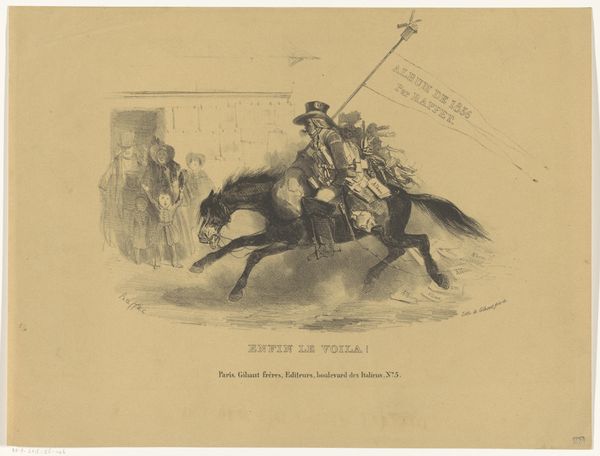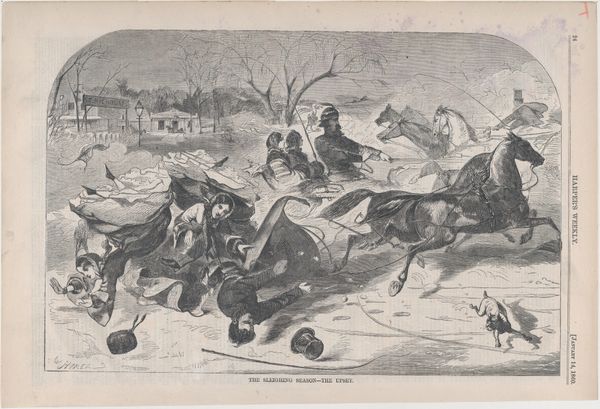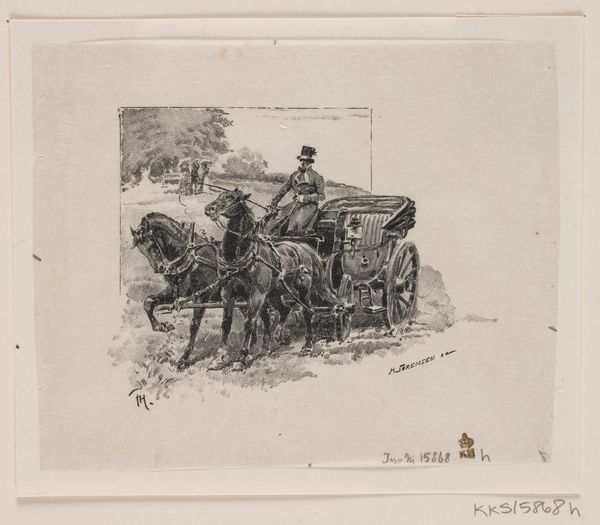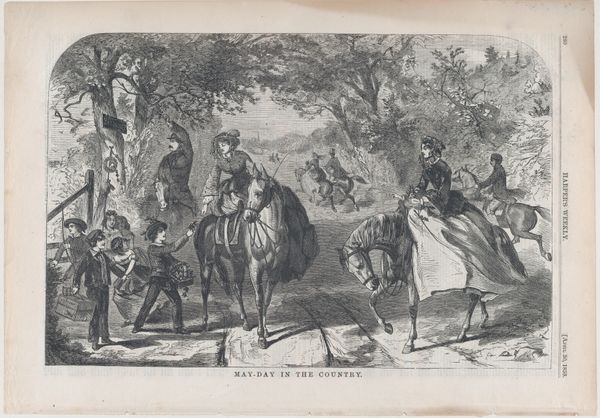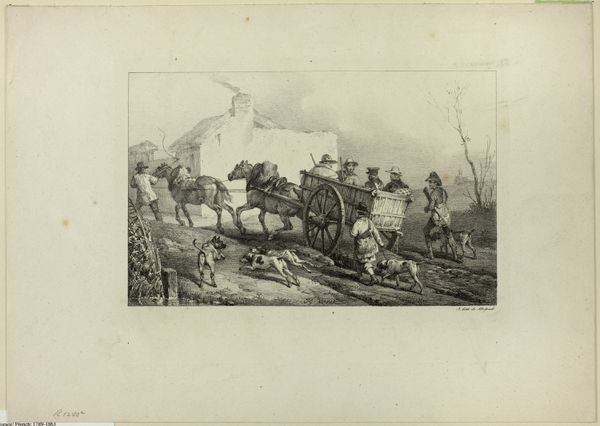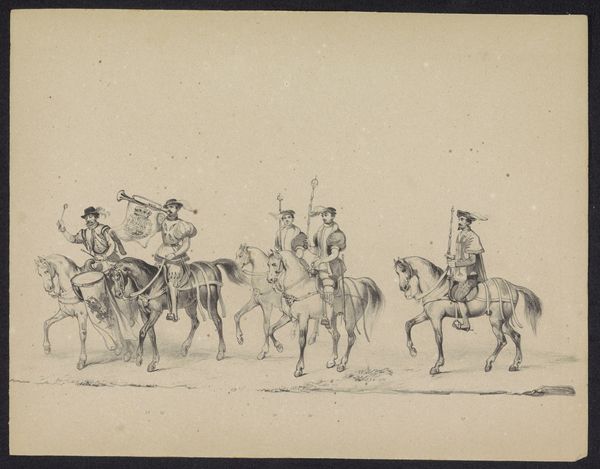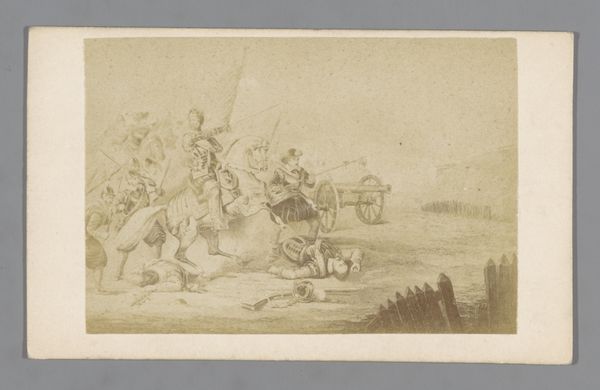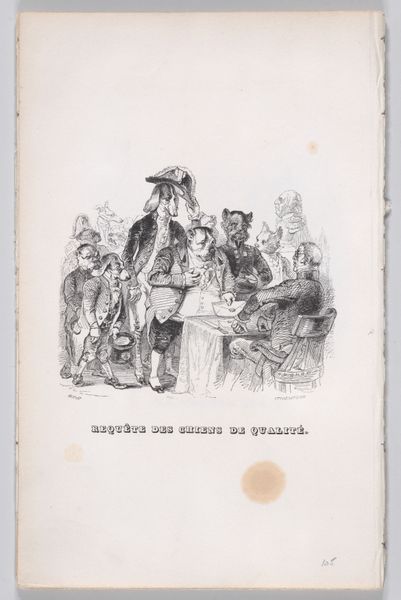
Four in Hand, from the Sports and Art Subjects series (N197) issued by Wm. S. Kimball & Co. 1886 - 1893
0:00
0:00
drawing, print
#
drawing
# print
#
genre-painting
#
history-painting
Dimensions: Sheet: 3 in. × 3 3/8 in. (7.6 × 8.5 cm)
Copyright: Public Domain
Curator: This print, "Four in Hand, from the Sports and Art Subjects series" was created by Wm. S. Kimball & Co. between 1886 and 1893. Part of the Metropolitan Museum's collection, it's a fascinating artifact of commercial art, specifically a cigarette card. Editor: Whew! The feeling I get is one of pure velocity. It’s almost blurry, like a memory half-recalled, what with all the action. Look at those horses, the dog—every muscle strained, charging forward. Is it a race, or a getaway? Curator: That sense of speed certainly captures the dynamism of the era. This image speaks to the late 19th century’s fascination with progress, with asserting dominance over nature. It visually promotes leisure and luxury, but we can unpack the ways race, class, and gender intersect within these representations of the good life. Editor: Absolutely. See that lone dog darting beside the lead horses? So unexpected! I wonder, is he a stray tagging along, or part of the spectacle? Gives me a sudden sense of him just trying to keep up with this runaway wealth and power. Curator: That detail highlights an important tension. While the passengers in the carriage represent established wealth and leisure, the relentless forward motion depends on exploiting both animals and natural resources. Think, too, about who had access to this leisure. Cigarette cards were widely distributed, but who was actually able to enjoy this scene? Who gets left behind in this mad dash? Editor: And what’s at stake if they fail, if the horses stumble or the wheels break? There’s a real undercurrent of risk, of the precariousness of maintaining such a spectacle. And if we linger on the edges, is the “New York” from the sign above intended to stand as an idea, a city destination that they may or may not reach in reality. Curator: Precisely. This piece then offers a commentary, intentional or not, on social and economic inequalities masked by this beautiful exterior. What appears celebratory is undercut by the mechanics, the forces—animal and human—required to fuel such a display. Editor: It's interesting how something so outwardly celebratory can actually hold all these tensions once you start peeling back the layers. Now I feel unsettled instead of thrilled, haunted even. Curator: And that's precisely why studying such a piece, through the lenses of both art history and social awareness, yields these vital connections to our world. Editor: Yeah, who knew a little cigarette card could hold so much smoke, right?
Comments
No comments
Be the first to comment and join the conversation on the ultimate creative platform.
